(377) Festival Tsukuba 2023 (2)
文字数 3,996文字
First, I’ll give you some information about the floats called Nebuta.
[Comparison of Nebutas]
Aomori Nebuta are 5m high, 9m wide, and 7m deep.
Tsukuba's Big Nebuta are 5m high, 9m wide, and 8m deep.
In other words, the Tsukuba Nebuta are almost the same size as the Aomori Nebuta.
You know what. The maximum width of the Nebuta is determined by the width of the road where the parade is held. Also, the height of the Nebuta is determined by the height of the pedestrian bridge and electric wires.
Since the road conditions are similar, Aomori Nebuta and Tsukuba’s Big Nebuta are the same height.
However, the sight of two Nebuta floats simaltaneously lined up on the opposite lanes is a gorgeous sight that can only be seen in Tsukuba.
By the way, the Nebuta in Hirosaki City(弘前市) are 5 to 9 meters high, 6 meters wide, and 4 meters deep, and the Nebuta in Goshogawara City (五所川原市)are 22 meters high, 8 meters wide, and 8 meters deep. You can see that Goshogawara City has no restrictions due to pedestrian bridges or electric wires.
In Hirosaki, "Nebuta" are called "Neputa".
The chant for the Aomori Nebuta Festival is “Rassela Rassela'', while the chant in Hirosaki Neputa Festival is “Yaya Do'', and the chant in Goshogawara Tachibuta Festival(五所川原立佞武多まつり) is “Yattemare''. Tsukuba Festival follows the Aomori style.
[Nebuta composition]
The main scene on the front of a Nebuta is called “Kagami-e(鏡絵),'' and the sub-scene on the back is called “Miokuri-e (見送り絵).'' Hirosaki Neputa have detailed rules so that the front and back sides are contrasting, but there are no detailed rules for Aomori Nebuta.
Reference: Classification of mirror paintings and farewell paintings
http://neputa.jp/?page_id=41
[Big drum]
Matsuri Tsukuba had previously borrowed a “gaisen taiko, (triumphal drum, 3.35 meters in diameter)” from Aomori. This drum was retired in 2015 due to aging. Tsukuba City is currently borrowing from the Aomori Nebuta Festival's Shusse Odaiko drum (3.1 meters in diameter).
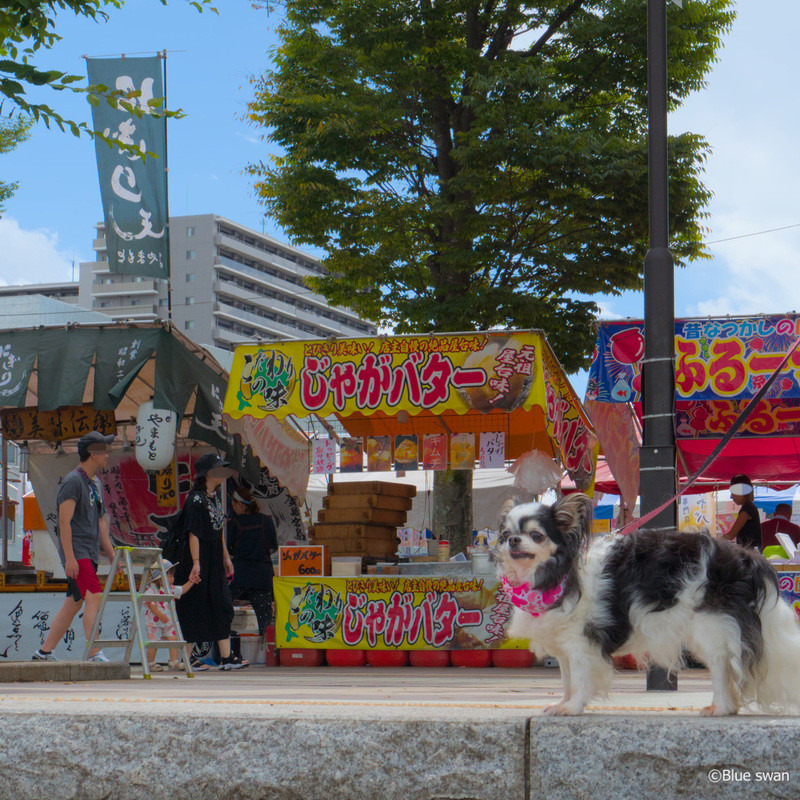
① I'm continuing my walk.
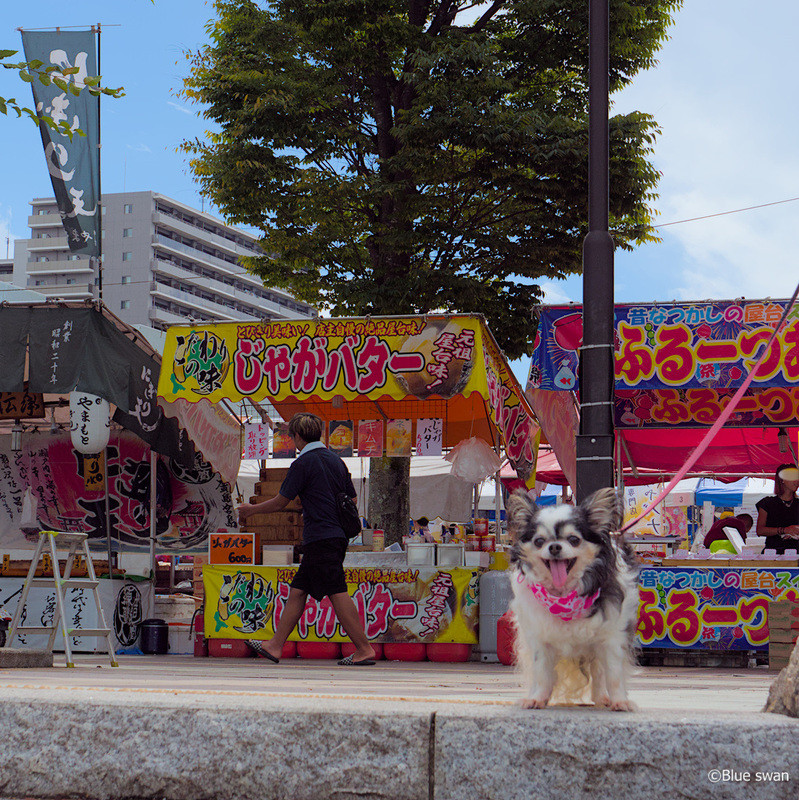
② Looking towards the bus center, I am in a good mood.

③ A mist fan is blowing on me.
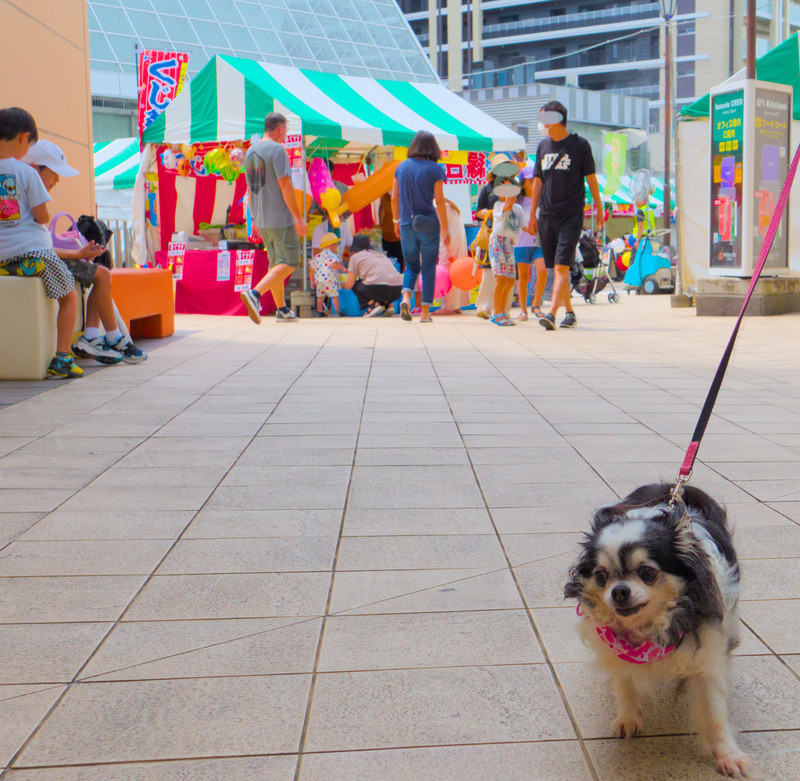
④ I am in front of a water balloon (yo-yo) fishing stall.

⑤ I am in front of another mist fan. It's cooler here. That's all for the daytime part, and the following is the night part.

⑥ This is Nebuta “Zhong Kui, (鍾馗,しょうき).” Its original work was created by Kitamura Renmei in 2014. Zhong Kui is a Taoist god of protection from evil in Chinese folklore. Zhong Kui always has a long beard, wears the costume of a Chinese official, carries a sword, and is always glaring at something with his big eyes.

⑦ The person behind Zhong Kui is thought to be Tokugawa Ieyasu (徳川家康), as he is holding a shidagusoku, his iconic fern crest armor, in his left hand.
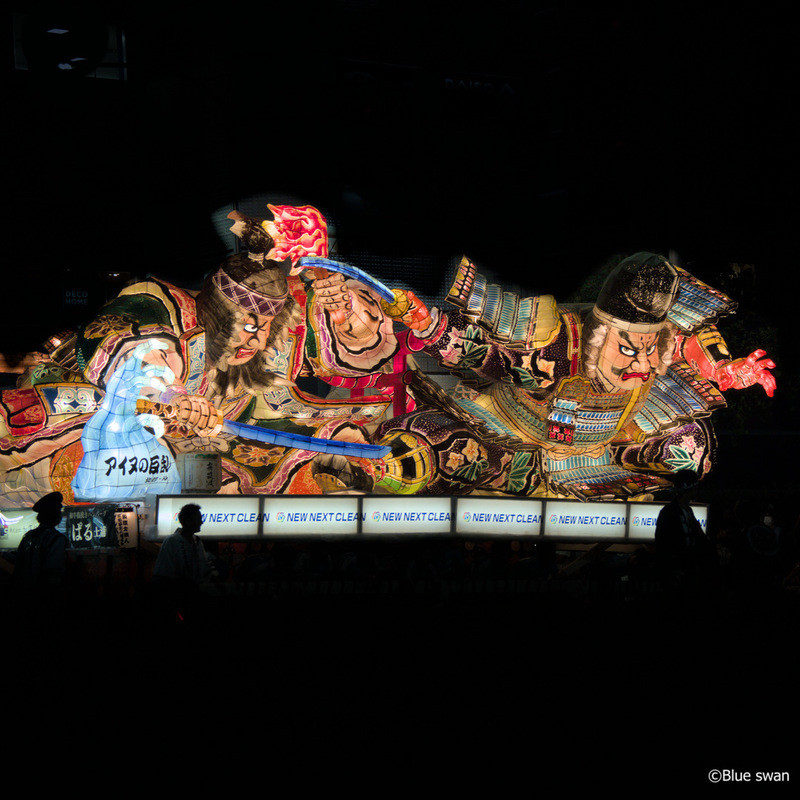
⑧ This is Nebuta "Ainu Rebellion" (created by Kitamura Renmei, based on "Chief Koshamain's Rebellion").
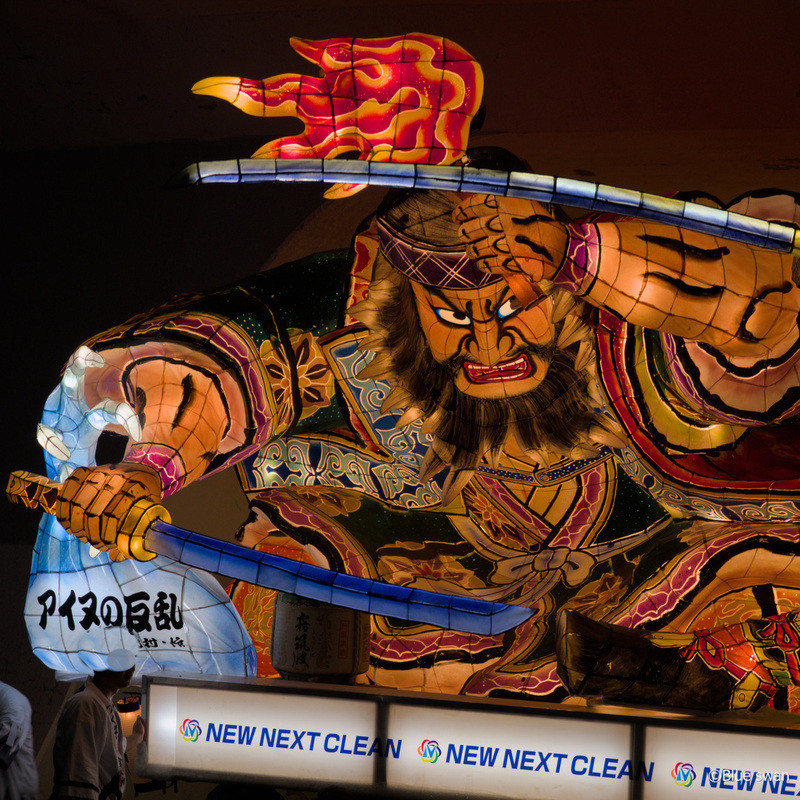
⑨ This is a close-up photo of ⑧.
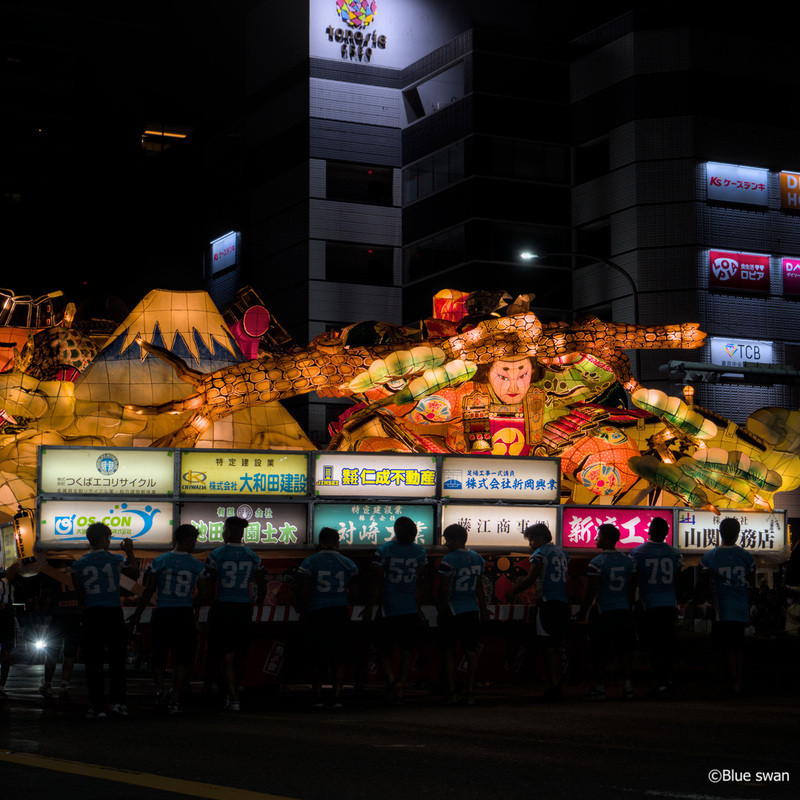
⑩The back of the “Ainu Rebellion'' is Mt. Fuji and a female military commander.
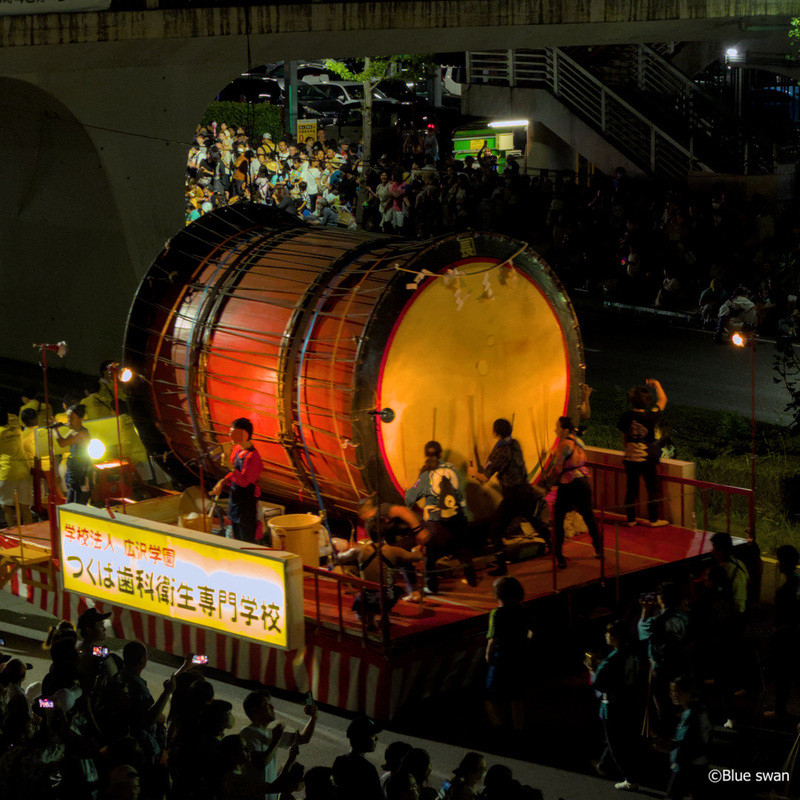
⑪This is the Shusse Odaiko drum of the Aomori Nebuta Festival.
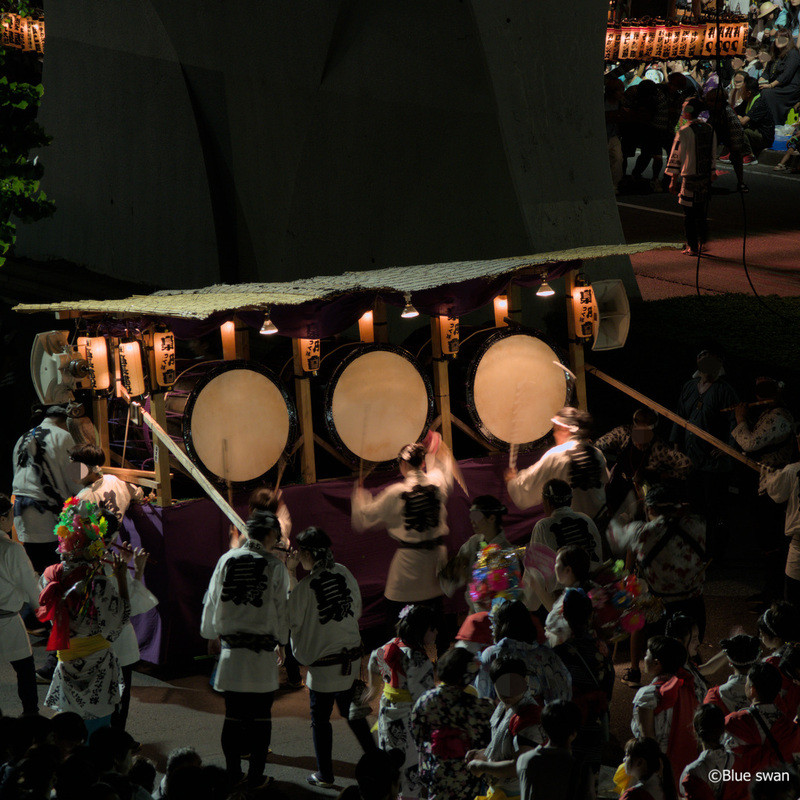
⑫ They are the members of “Owl no Kai Hayashikata (梟乃會囃子方, ふくろうのかいはやしかた)”.
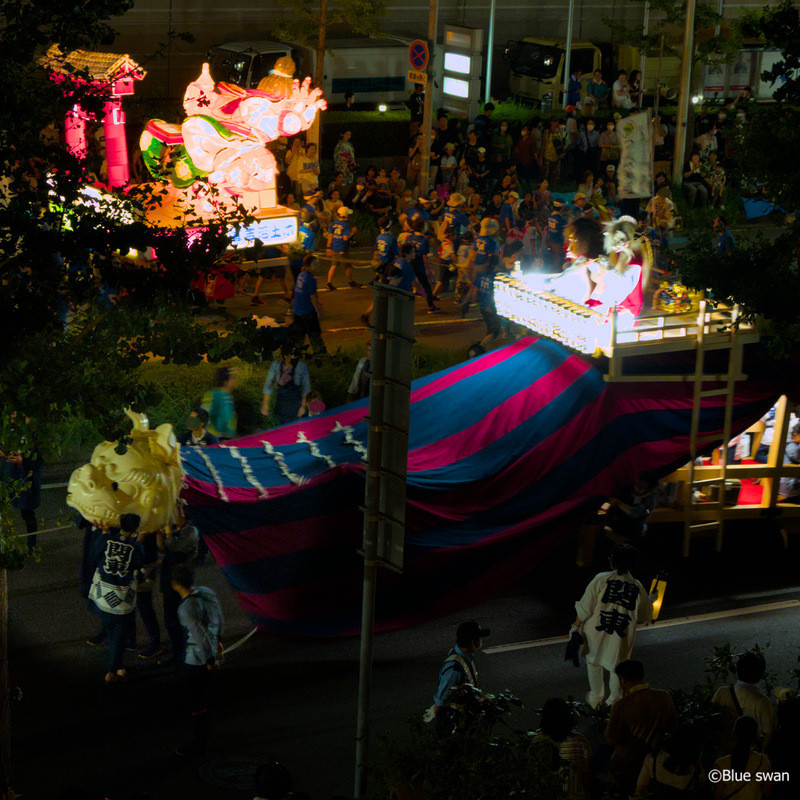
⑬ This is a “Horojishi” with a white lion head. You can see a small Nebuta in the opposite lane behind it.
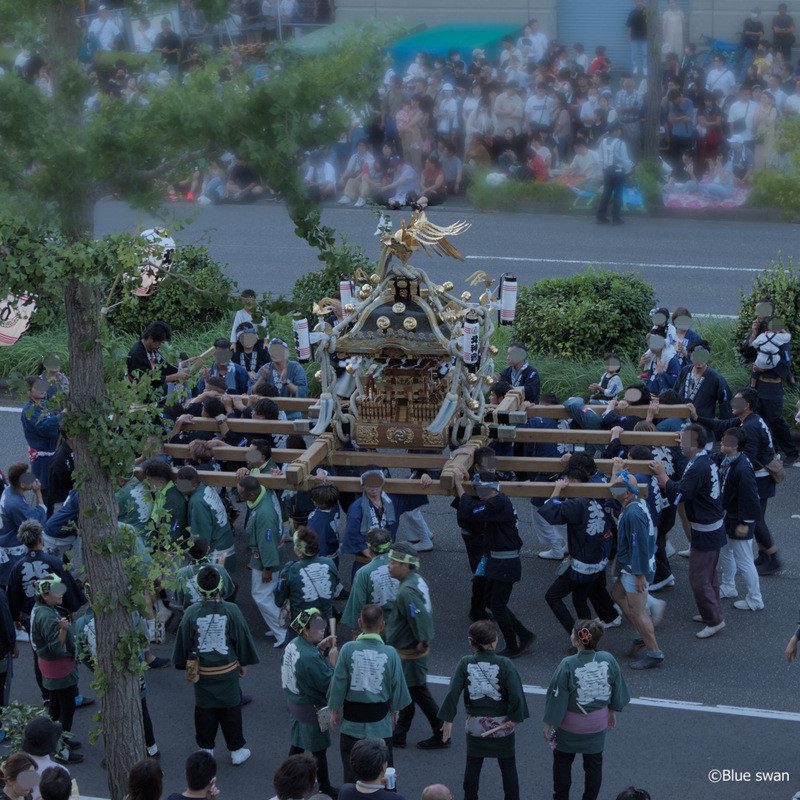
⑭ This is a mikoshi (portable shrine) of the “Kitashinkai(北神會)” in Kamigo(上郷), Tsukuba City.
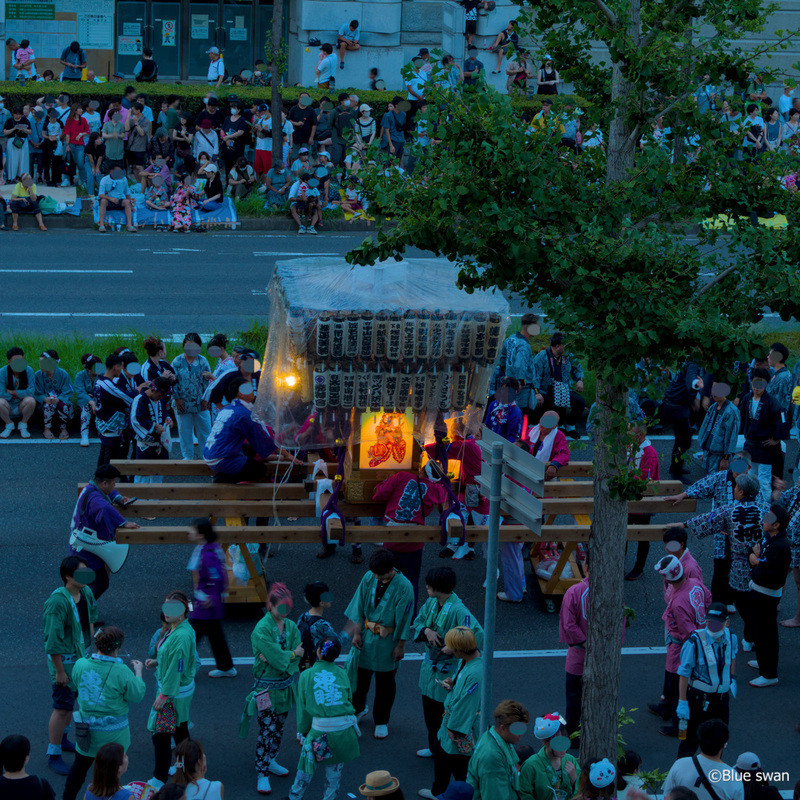
⑮ It is a mikoshi of "Hishinkai (飛神會) " in Imakashima (今鹿島), Tsukuba City. There are 96 lanterns.
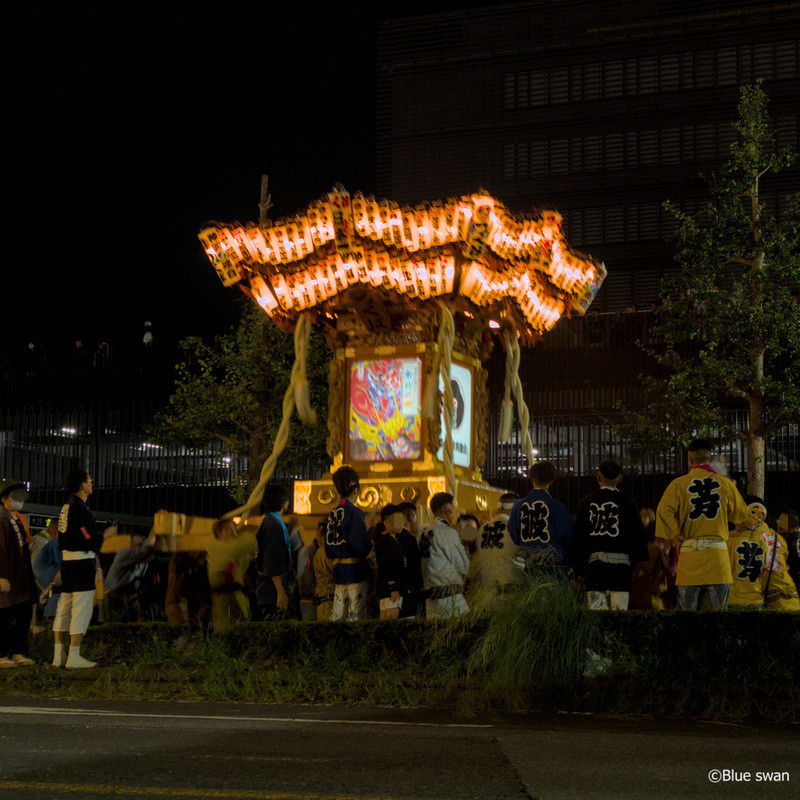
⑯ This is the “Manto Mikoshi (万灯神輿)”of Tsukuba Mikoshi Association (つくば神輿連合) made in 2001. There are 144 lanterns, making it the largest mikoshi in Japan.
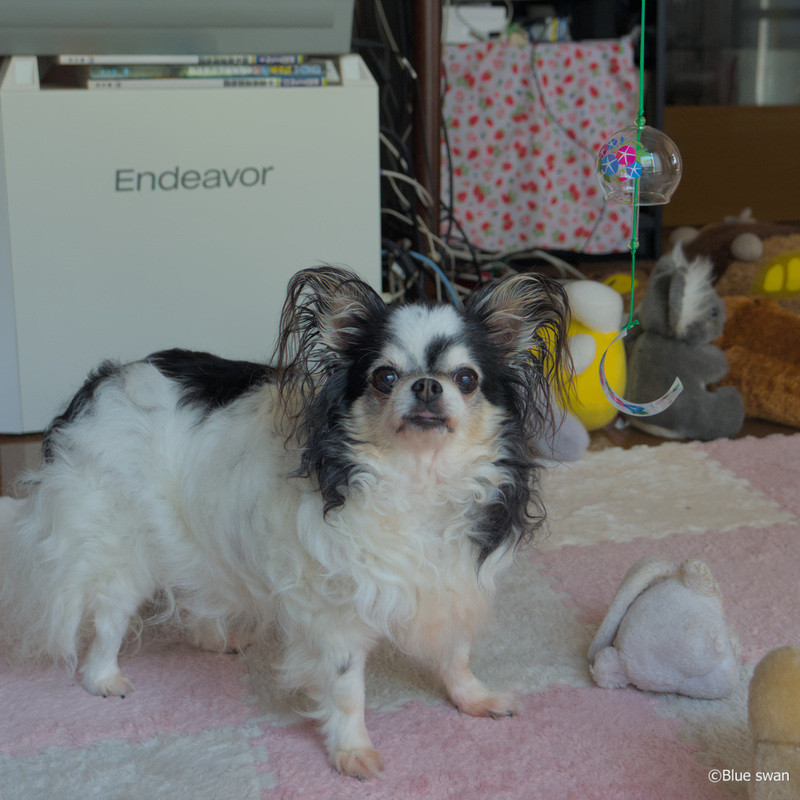
⑰ P.S. I'm playing with a wind chime, and it feels like a summer festival.
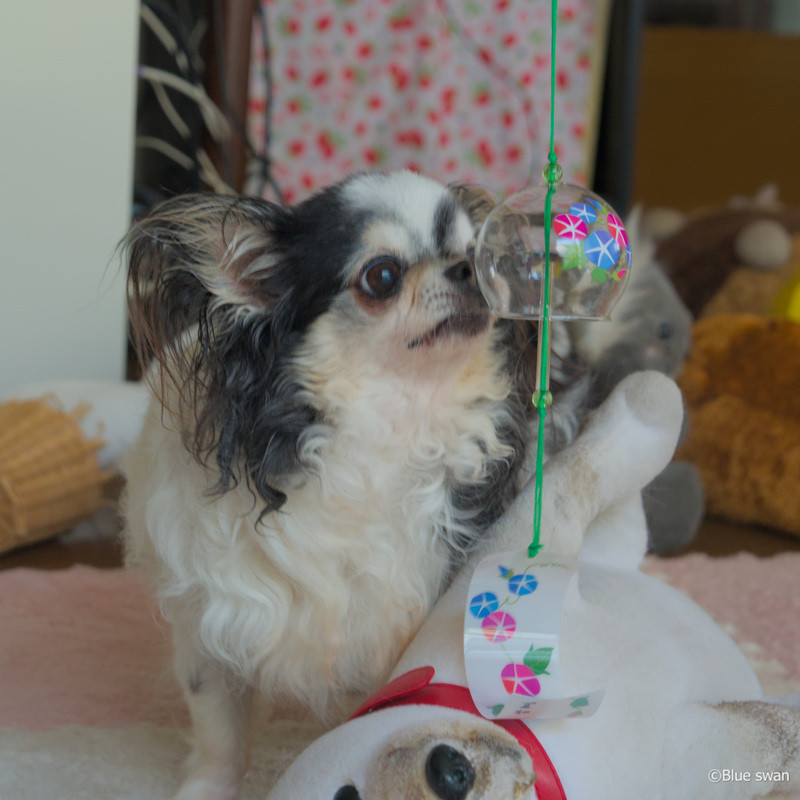
⑱ I’m sniffing the wind chime.
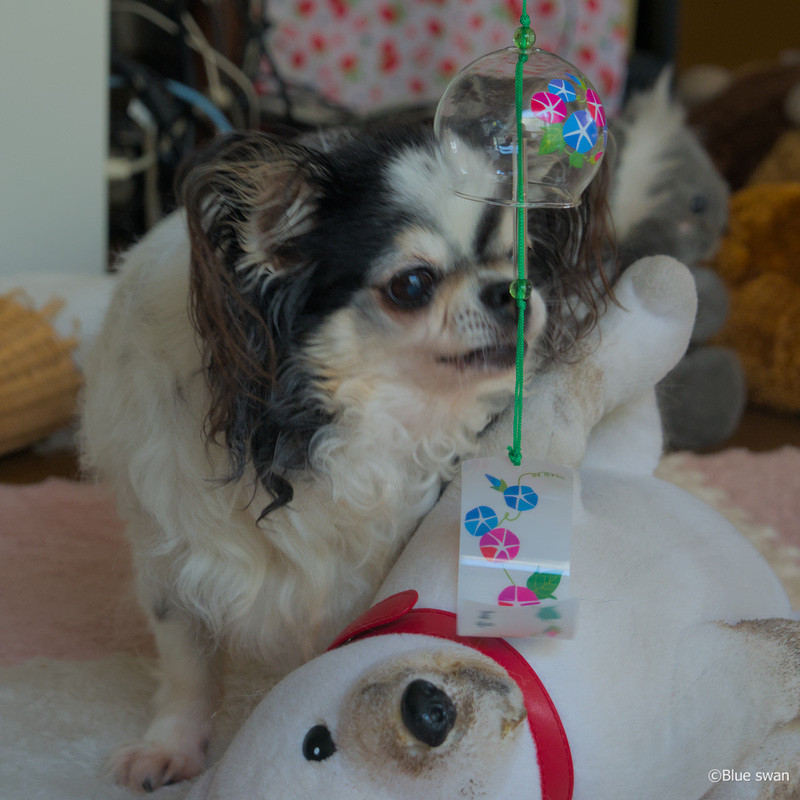
⑲ When my nose touches the string, it makes a sound.
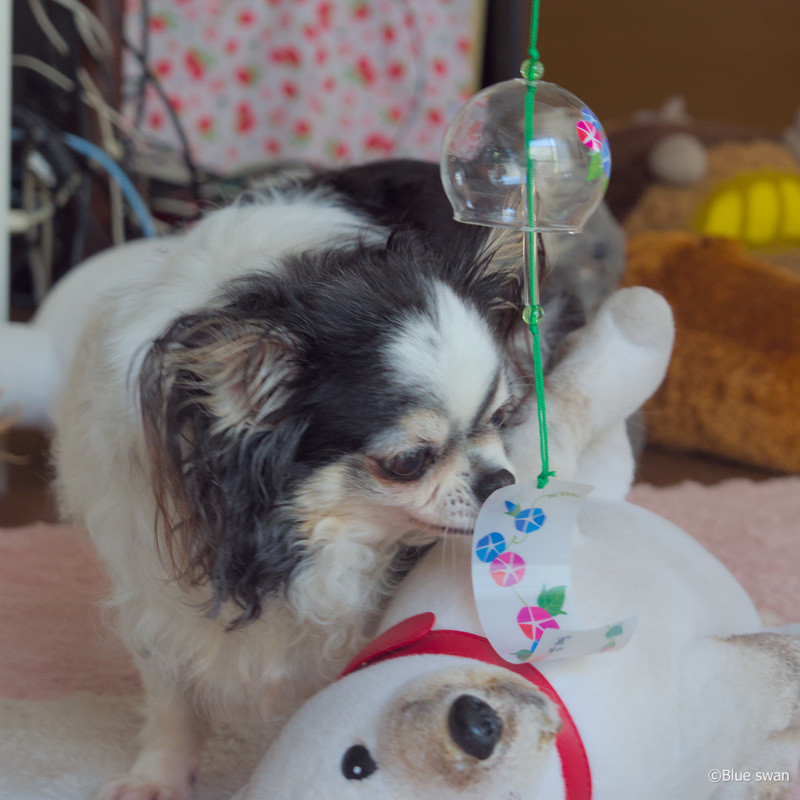
⑳ I’m checking the smell of the Tanzaku (短冊), strips of paper.
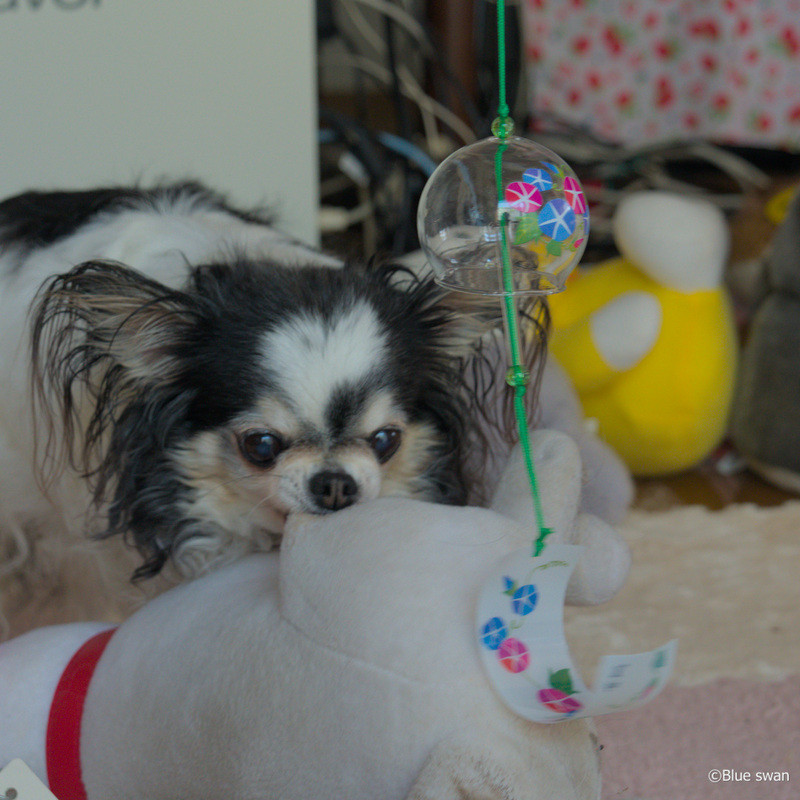
㉑I am relaxing and playing with my Dad dog.
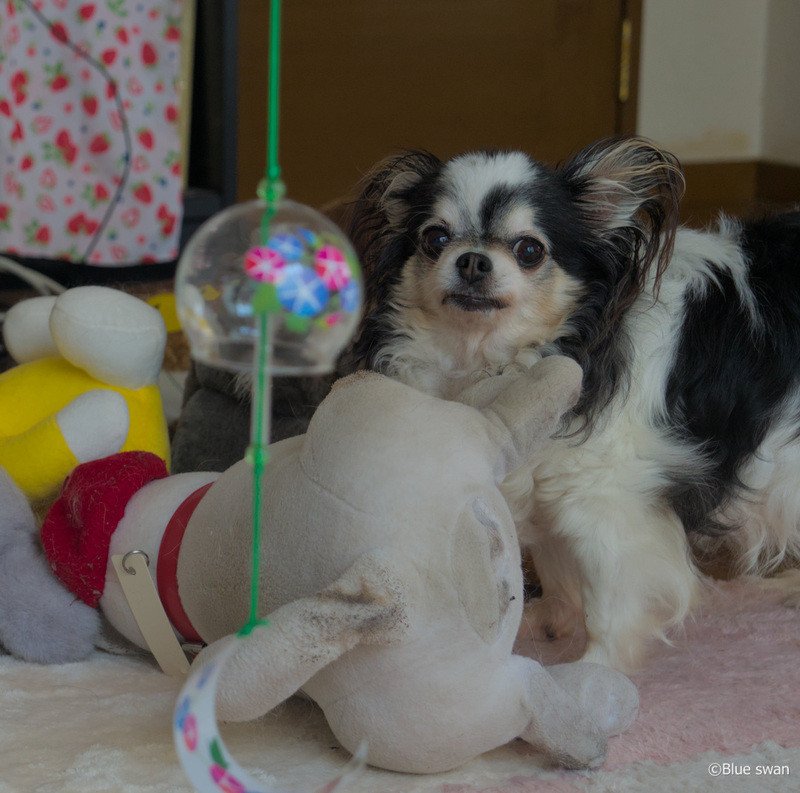
㉒When Dad dog touches the wind chime, it makes a nice sound.
[Comparison of Nebutas]
Aomori Nebuta are 5m high, 9m wide, and 7m deep.
Tsukuba's Big Nebuta are 5m high, 9m wide, and 8m deep.
In other words, the Tsukuba Nebuta are almost the same size as the Aomori Nebuta.
You know what. The maximum width of the Nebuta is determined by the width of the road where the parade is held. Also, the height of the Nebuta is determined by the height of the pedestrian bridge and electric wires.
Since the road conditions are similar, Aomori Nebuta and Tsukuba’s Big Nebuta are the same height.
However, the sight of two Nebuta floats simaltaneously lined up on the opposite lanes is a gorgeous sight that can only be seen in Tsukuba.
By the way, the Nebuta in Hirosaki City(弘前市) are 5 to 9 meters high, 6 meters wide, and 4 meters deep, and the Nebuta in Goshogawara City (五所川原市)are 22 meters high, 8 meters wide, and 8 meters deep. You can see that Goshogawara City has no restrictions due to pedestrian bridges or electric wires.
In Hirosaki, "Nebuta" are called "Neputa".
The chant for the Aomori Nebuta Festival is “Rassela Rassela'', while the chant in Hirosaki Neputa Festival is “Yaya Do'', and the chant in Goshogawara Tachibuta Festival(五所川原立佞武多まつり) is “Yattemare''. Tsukuba Festival follows the Aomori style.
[Nebuta composition]
The main scene on the front of a Nebuta is called “Kagami-e(鏡絵),'' and the sub-scene on the back is called “Miokuri-e (見送り絵).'' Hirosaki Neputa have detailed rules so that the front and back sides are contrasting, but there are no detailed rules for Aomori Nebuta.
Reference: Classification of mirror paintings and farewell paintings
http://neputa.jp/?page_id=41
[Big drum]
Matsuri Tsukuba had previously borrowed a “gaisen taiko, (triumphal drum, 3.35 meters in diameter)” from Aomori. This drum was retired in 2015 due to aging. Tsukuba City is currently borrowing from the Aomori Nebuta Festival's Shusse Odaiko drum (3.1 meters in diameter).

① I'm continuing my walk.

② Looking towards the bus center, I am in a good mood.

③ A mist fan is blowing on me.

④ I am in front of a water balloon (yo-yo) fishing stall.

⑤ I am in front of another mist fan. It's cooler here. That's all for the daytime part, and the following is the night part.

⑥ This is Nebuta “Zhong Kui, (鍾馗,しょうき).” Its original work was created by Kitamura Renmei in 2014. Zhong Kui is a Taoist god of protection from evil in Chinese folklore. Zhong Kui always has a long beard, wears the costume of a Chinese official, carries a sword, and is always glaring at something with his big eyes.

⑦ The person behind Zhong Kui is thought to be Tokugawa Ieyasu (徳川家康), as he is holding a shidagusoku, his iconic fern crest armor, in his left hand.

⑧ This is Nebuta "Ainu Rebellion" (created by Kitamura Renmei, based on "Chief Koshamain's Rebellion").

⑨ This is a close-up photo of ⑧.

⑩The back of the “Ainu Rebellion'' is Mt. Fuji and a female military commander.

⑪This is the Shusse Odaiko drum of the Aomori Nebuta Festival.

⑫ They are the members of “Owl no Kai Hayashikata (梟乃會囃子方, ふくろうのかいはやしかた)”.

⑬ This is a “Horojishi” with a white lion head. You can see a small Nebuta in the opposite lane behind it.

⑭ This is a mikoshi (portable shrine) of the “Kitashinkai(北神會)” in Kamigo(上郷), Tsukuba City.

⑮ It is a mikoshi of "Hishinkai (飛神會) " in Imakashima (今鹿島), Tsukuba City. There are 96 lanterns.

⑯ This is the “Manto Mikoshi (万灯神輿)”of Tsukuba Mikoshi Association (つくば神輿連合) made in 2001. There are 144 lanterns, making it the largest mikoshi in Japan.

⑰ P.S. I'm playing with a wind chime, and it feels like a summer festival.

⑱ I’m sniffing the wind chime.

⑲ When my nose touches the string, it makes a sound.

⑳ I’m checking the smell of the Tanzaku (短冊), strips of paper.

㉑I am relaxing and playing with my Dad dog.

㉒When Dad dog touches the wind chime, it makes a nice sound.
